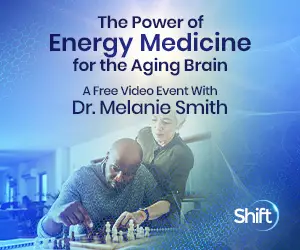By Deane Alban
Contributing Writer for Wake Up World
Dopamine is a key neurotransmitter for motivation, focus and productivity. Learn the symptoms of dopamine deficiency and natural ways to increase dopamine levels …
There are about 100 billion neurons in the human brain — about as many stars as there are in the Milky Way. These cells communicate with each other via brain chemicals called neurotransmitters.
Dopamine is the neurotransmitter responsible for providing motivation, drive, and focus. It plays a role in many mental disorders including depression, addictions, ADHD, and schizophrenia.
Let’s take a closer look at dopamine — what it does, symptoms of deficiency, and how to increase it naturally.
Dopamine: The Motivation Molecule
Dopamine has been called our “motivation molecule.” It boosts our drive, focus, and concentration. It enables us to plan ahead and resist impulses so we can achieve our goals. It gives us that “I did it!” lift when we accomplish what we set out to do. It makes us competitive and provides the thrill of the chase in all aspects of life — business, sports, and love.
Dopamine is in charge of our pleasure-reward system. (1) It allows us to have feelings of enjoyment, bliss, and even euphoria. But too little dopamine can leave you unfocused, unmotivated, lethargic, and even depressed.
Dopamine Deficiency Symptoms
People low in dopamine lack a zest for life. They exhibit low energy and motivation, and often rely on caffeine, sugar, or other stimulants to get through the day.
Many common dopamine deficiency symptoms are similar to those of depression:
- lack of motivation
- fatigue
- apathy
- procrastination
- inability to feel pleasure
- low libido
- sleep problems
- mood swings
- hopelessness
- memory loss
- inability to concentrate
Dopamine-deficient lab mice become so apathetic and lethargic they lack motivation to eat and starve to death. Conversely, some people who are low in dopamine compensate with self-destructive behaviors to get their dopamine boost. This can include use and abuse of caffeine, alcohol, sugar, drugs, shopping, video games, sex, power, or gambling.
How to Increase Dopamine Naturally
There are plenty of unhealthy ways to raise dopamine. But you don’t have to resort to “sex, drugs, and rock ‘n’ roll” to boost your dopamine levels. Here are some healthy, proven ways to increase dopamine levels naturally.
Foods That Increase Dopamine
Dopamine is made from the amino acid tyrosine. Eating a diet high in tyrosine will ensure you’ve got the basic building blocks needed for dopamine production.
Here’s a list of tyrosine-rich foods: (3, 4, 5, 6)
- all animal products
- almonds
- apples
- avocado
- bananas
- beets
- chocolate
- coffee
- fava beans
- green leafy vegetables
- green tea
- lima beans
- oatmeal
- sea vegetables
- sesame and pumpkin seeds
- turmeric
- watermelon
- wheat germ
Foods high in natural probiotics such as yogurt, kefir, and raw sauerkraut can also increase natural dopamine production. Oddly, the health of your intestinal flora impacts your production of neurotransmitters.
An overabundance of bad bacteria leaves toxic byproducts called lipopolysaccharides which lower levels of dopamine. (7)
Sugar has been found to boost dopamine but this is a temporary boost, more drug-like than food-like. (8)
Dopamine Supplements
There are supplements that can raise dopamine levels naturally.
Curcumin is the active ingredient in the spice turmeric. It’s available in an isolated form as a supplement. It readily crosses the blood-brain barrier and can boost levels of dopamine. (9, 10, 11)
Curcumin has been found to help alleviate obsessive actions and improve associated memory loss by increasing dopamine. (12, 13)
Ginkgo biloba is traditionally used for a variety of brain-related problems — poor concentration, forgetfulness, headaches, fatigue, mental confusion, depression, and anxiety. (14)
One of the mechanisms by which ginkgo works is by raising dopamine. (15, 16)
L-theanine is a component found in green tea. It increases levels of dopamine along with other neurotransmitters serotonin and GABA. (17, 18) L-theanine improves recall, learning, and positive mood. (19, 20) You can get your dopamine boost by either taking theanine supplements or by drinking 3 cups of green tea per day. (21)
L-tyrosine — the precursor to dopamine — is available as a supplement.
We recommend taking acetyl-l-tyrosine — a more absorbable form that readily crosses the blood-brain barrier. (22)
Phosphatidylserine acts as your brain’s “gatekeeper,” regulating nutrients and waste in and out of your brain. It can increase dopamine levels and improve memory, concentration, learning, and ADHD. (23, 24, 25)
Boost Dopamine with Exercise
Physical exercise is one of the best things you can do for your brain. It boosts production of new brain cells, slows down brain cell aging, and improves the flow of nutrients to the brain. It can also increase your levels of dopamine and the other “feel good” neurotransmitters serotonin and norepinephrine. (26)
Dr. John Ratey, renowned psychiatrist and author of Spark: The Revolutionary New Science of Exercise and the Brain, has extensively studied the effects of physical exercise on the brain. He found that exercise raises baseline levels of dopamine by promoting the growth of new brain cell receptors.
Dopamine is responsible in part for the high serious runners experience. (27) But you don’t need to exercise strenuously to enhance your brain. Taking walks, or doing gentle, no-impact exercises like yoga, tai chi, or qi gong all provide powerful mind-body benefits. (28, 29, 30)
Increase Dopamine with Meditation
The benefits of meditation have been proven in over 1,000 studies. (31) Regular meditators experience enhanced ability to learn, increased creativity, and deep relaxation. It’s been shown that meditation increases dopamine, improving focus and concentration. (32)
Crafting hobbies of all kinds — knitting, quilting, sewing, drawing, photography, woodworking, and home repair — focus the brain similarly to meditation. These activities increase dopamine, ward off depression, and protect against brain aging. (33)
Listening to music can cause of release of dopamine. Oddly, you don’t even have to hear music to get this neurotransmitter flowing — just the anticipation of listening can do that. (34)
Using Your Brain’s Reward System to Balance Dopamine
Dopamine functions as a survival mechanism by releasing energy when a great opportunity is in front of you. Dopamine rewards us when our needs are met. We love dopamine surges because of the way they make us feel. But according to Dr. Loretta Graziano Breuning, author of Meet Your Happy Chemicals: Dopamine, Endorphin, Oxytocin, Serotonin, we are not designed to experience a non-stop dopamine buzz. The constant hunt for dopamine boosts can turn you into a “Wolf on Wall Street” — driven by addictions, greed, and lust.
Here are some healthy ways to balance your dopamine by working with your brain’s built-in reward system.
Enjoy the Quest
Our ancestors were on a constant quest to survive. They got a dopamine surge every time they spotted a new patch of berries or a better fishing hole because this meant they’d live to seek another day. While you can still pick berries and fish, there are endless other healthy ways you can enjoy the quest in modern life.
You can forage for new music to download, specialty ingredients to cook with, a travel package bargain, a hard-to-find collector’s item, or that perfect gift for a loved one. You can engage in specifically quest-oriented hobbies like geocaching, bird watching, rockhounding, amateur archaeology, and collecting of all kinds.
The act of seeking and finding activates your reward circuits — with no regrets later.
Create Both Long and Short Term Goals
Dopamine is released when we achieve a goal. Having only long term goals gets frustrating, so set both short term and long term goals. Short term goals don’t have to be anything major. They can be as simple as trying a new recipe, getting caught up on emails, cleaning a closet, or finally learning how to use a new app for your phone.
Break up long term goals into small short term goals to give yourself dopamine boosts along the way.
Take on a New Challenge
Getting a promotion is a great dopamine boost, but this doesn’t happen very often! But you can create your own dopamine rewards by setting a goal, then take small steps toward it every day. This can be starting a new exercise program, learning French, or challenging yourself to drive home from work a different way every day, preferably without the use of your GPS.
According to Dr. Graziano Breuning, working on a goal without fail for 45 days will train your brain to stimulate dopamine production in a new way.
Dopamine and Mental Conditions
Dopamine plays such an important role in how we live our lives, it’s no surprise that when the dopamine system is out of balance it can contribute to many mental conditions. (35)
Here are three of the most common conditions that have a dopamine connection.
Dopamine and ADHD
The underlying cause of ADHD is still unknown. Until recently it was widely accepted that the root cause of ADHD was probably an abnormality in dopamine function. This seems logical since dopamine is critical for maintaining focus. Most ADHD medications are based on this “dopamine deficiency” theory. Prescription medications used to treat ADHD are believed to work by increasing the release of dopamine and norepinephrine while slowing down their rate of reabsorption. (36)
However, the latest research suggests that the main cause of ADHD lies in a structural difference in the grey matter in the brain and not dopamine. (37)
Dopamine and Depression
Serotonin is the brain chemical most associated with depression. Selective serotonin reuptake inhibitors (SSRIs) such as Paxil, Prozac, Zoloft, Celexa, and Lexapro are prescribed for depression and work by increasing brain levels of serotonin. But this only works in about 40% of patients who use them. (38)
What about the other 60%?
There’s a growing body of evidence that shows low dopamine and not low serotonin is the cause of depression for many. Bupropion (brand name Wellbutrin) has proven effective for patients who haven’t been helped by SSRIs by addressing dopamine deficiency. (39)
How to determine if your depression is more likely from serotonin versus dopamine deficiency? Serotonin-based depression is accompanied by anxiety and irritability, while dopamine-based depression expresses itself as lethargy and lack of enjoyment of life. (40)
Dopamine and Schizophrenia
The cause of schizophrenia is unknown, but genetics and environmental factors are believed to play a role. (41) One prevailing theory is that it’s caused by an over-active dopamine system. (42, 43) Supporting evidence for this theory is that the best drugs to treat schizophrenia symptoms resemble dopamine and block dopamine receptors. (44)
However, these medications can take days to work which is indicative that the exact mechanism is not yet understood. (45)
How to Increase Dopamine in a Nutshell
Dopamine is our “motivation molecule.” It’s also in charge of our pleasure-reward system. There are both healthy ways and unhealthy ways to increase dopamine. Unhealthy ways to increase dopamine can be gateways to self-destruction and addictions. Healthy ways include eating the right foods, taking dopamine boosting supplements, physical exercise, and meditation.
Learn how to harness your reward system for a healthy stream of dopamine. Enjoy the quest, set both long term and short term goals, and take on new challenges. You’ll feel more alive, focused, productive, and motivated.
Previous articles by Deane:
- Ways to Improve Memory and Live Longer with Music
- Exposed: Why Cholesterol Doesn’t Cause Heart Disease
- Overcoming Resistance to Change: The Secret to Lasting Health
- Change Your Thoughts, Change Your Brain
- Advantame – the “New & Improved” Artificial Sweetener, Approved by FDA
- 5 Reasons You Aren’t Getting Enough Vitamin D.. and What You Can Do About It
- Five Common Food Additives That Can Damage Your Brain
- 18 Choices You Make Every Day That Keep You Up at Night
- Stress, Telomeres, and the Secret to Prevent Aging
- 20 Common Medications That Can Cause Memory Loss
Deane Alban holds a bachelor’s degree in biology and has taught and written on a wide variety of natural health topics for over 20 years. Her current focus is helping people overcome brain fog, “senior moments”, and other signs of mental decline now, and preventing Alzheimer’s and dementia in the future.
The human brain is designed to last a lifetime, but modern life takes a greater toll on the brain than most people realize. Deane teaches the best ways to keep your brain healthy and stay mentally sharp for life at her website BeBrainFit.com.

If you've ever found value in our articles, we'd greatly appreciate your support by purchasing Mindful Meditation Techniques for Kids - A Practical Guide for Adults to Empower Kids with the Gift of Inner Peace and Resilience for Life.
In the spirit of mindfulness, we encourage you to choose the paperback version. Delve into its pages away from screen glare and notifications, allowing yourself to fully immerse in the transformative practices within. The physical book enriches the learning process and serves as a tangible commitment to mindfulness, easily shared among family and friends.
Over the past few years, Wake Up World has faced significant online censorship, impacting our financial ability to stay online. Instead of soliciting donations, we're exploring win-win solutions with our readers to remain financially viable. Moving into book publishing, we hope to secure ongoing funds to continue our mission. With over 8,500 articles published in the past 13 years, we are committed to keeping our content free and accessible to everyone, without resorting to a paywall.










